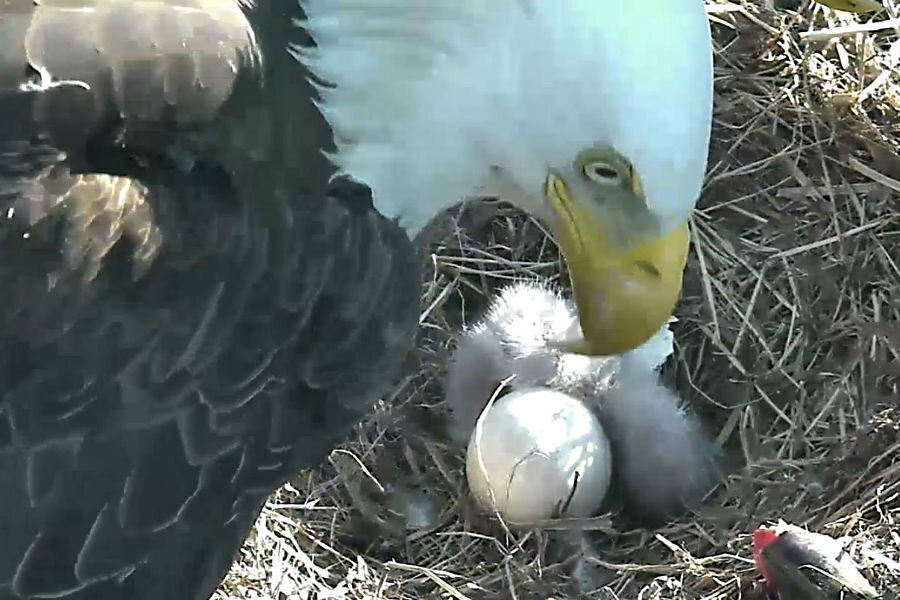From eaglets to wildebeest: Wildlife cams offer intimate glimpse of nature
Loading...
A live look at the hatching process of two bald eagle eggs in the United States National Arboretum is just one of the perks of wildlife cameras being placed in zoos and natural areas around the world.
The camera situated above the eagle nest in the arboretum’s Azalea Collection offers a live look at the home of the affectionately named “Mr. President” and “The First Lady,” the first bald eagle couple to roost in that location since 1947. The executive eagle couple’s eggs are currently hatching; the first began the process on Wednesday and the second is expected to start this weekend. The first baby bird is already out of its shell and under the close watch of its parents.
The American Eagle Foundation began livestreaming the President and First Lady’s activities last month after it was found that the couple had laid the two eggs. And while the National Arboretum’s filming efforts center around the ongoing hatching process and unique nesting location of the bald eagle family, that nature cam is just one of many set up around the world offering people a unprecedented access to the intimate lives of wild animals.
The rising popularity of livestreaming events, coupled with the growing ubiquity of Internet access, has made it possible for wildlife enthusiasts to get a better view of the natural world than ever before. Whereas exposure to animals like the bald eagles may previously have been limited to photos or a rare, far-off glimpse, it is now possible to view different animals in their natural settings.
Several zoos now offer the option to view live “animals webcams” set up in their residents’ enclosures. The Houston Zoo offers a live look into the lives of its gorillas, elephants, giraffes, and more, Seattle’s Woodland Park Zoo features tiger, bat, and bear cams, and back in Washington the Smithsonian’s National Zoo allows visitors to experience the lives of its elephants, pandas, and lions.
The reach of livestreamed animal footage is not limited to those in captivity, though. As with the eagles in the National Arboretum, nature cams have been placed in the wild in some locations. For example, the Annenberg Foundation’s explore.org has dedicated live streams of animals across North America, from California to Manitoba, above and below water. It also has streams of domesticated animals throughout the US, a polar bear family in Denmark, and offers several views from wildlife cameras in central Kenya.
While nature cams can provide those with interest in wildlife with unprecedented views into the daily activities of animals in the wild, they can also show nature’s harsher side. Sometimes, animals in view of the cameras have gotten into trouble, to the displeasure of viewers watching the streams. Animals have starved, broken their limbs, suffered from disease, and more, without intervention from wildlife managers.
But they say that’s how it should be. Cameras are “not to be used as a baby monitor to intervene when we see something that makes us feel sad as humans,” Maine Inland Fisheries & Wildlife biologist Erynn Call told the Associated Press.
“The general view is not to intervene,” Patrick Keenan, of Maine’s Biodiversity Research Institute, said. “These are wildlife. They're not pets.”








